Acoustic sensors enable efficient and non-invasive monitoring of a wide range of species, including many that are difficult to monitor in other ways. Although they were initially limited in application scope largely due to cost and hardware constraints, the development of low-cost, open-source models like the Audiomoth in recent years has increased access immensely and opened up new avenues of research. For example, some teams are using them to identify illicit human activities through the detection of associated sounds, like gunshots, vehicles, or chainsaws (e.g. OpenEars).
With this relatively novel dimension of wildlife monitoring rapidly advancing in both marine and terrestrial systems, it is crucial that we identify and share information about the utility and constraints of these sensors to inform efforts. A recent study identified advancements in hardware and machine learning applications, as well as early development of acoustic biodiversity indicators, as factors facilitating progress in the field. In terms of limitations, the authors highlight insufficient reference sound libraries, a lack of open-source audio processing tools, and a need for standardization of survey and analysis protocols. They also stress the importance of collaboration in moving forward, which is precisely what this group will aim to facilitate.
If you're new to acoustic monitoring and want to get up to speed on the basics, check out these beginner's resources and conversations from across the WILDLABS platform:
Three Resources for Beginners:
- Listening to Nature: The Emerging Field of Bioacoustics, Adam Welz
- Ecoacoustics and Biodiversity Monitoring, RSEC Journal
- Monitoring Ecosystems through Sound: The Present and Future of Passive Acoustics, Ella Browning and Rory Gibb
Three Forum Threads for Beginners:
- AudioMoth user guide | Tessa Rhinehart
- Audiomoth and Natterjack Monitoring (UK) | Stuart Newson
- Help with analysing bat recordings from Audiomoth | Carlos Abrahams
Three Tutorials for Beginners:
- "How do I perform automated recordings of bird assemblages?" | Carlos Abrahams, Tech Tutors
- "How do I scale up acoustic surveys with Audiomoths and automated processing?" | Tessa Rhinehart, Tech Tutors
- Acoustic Monitoring | David Watson, Ruby Lee, Andy Hill, and Dimitri Ponirakis, Virtual Meetups
Want to know more about acoustic monitoring and learn from experts in the WILDLABS community? Jump into the discussion in our Acoustic Monitoring group!
Header image: Carly Batist
- @garthpaine
- | He/Him
Arizona State University
Garth Paine (https://www.activatedspace.com/ ) is acoustic ecologist, composer, sound artist, and academic (ASU) based in USA/Australia. He is known for his pioneering work on species density metrics from ambient recordings and his anti-poaching efforts
- 1 Resources
- 0 Discussions
- 5 Groups
Natural Solutions
Engineer, Ph.D in Computation Ecology. Interested in developing tools for the massive acquisition of high dimensional data from new technologies (e.g., imaging, omics), their analysis and visualization.
- 0 Resources
- 0 Discussions
- 13 Groups
Researcher interested in the conservation of endemic anurans from arid High Andes. Focused on behavior, ecology, physiology, and reproduction studies. Education for conservation.
- 0 Resources
- 0 Discussions
- 7 Groups
PhD Candidate at University College London. Research and develop wireless sensor networks for biodiversity monitoring. Currently working on a software package for AI bioacoustics classifiers on edge device.
- 0 Resources
- 2 Discussions
- 8 Groups
- @jmondragon
- | He/Him
- 0 Resources
- 1 Discussions
- 5 Groups
Rainforest Connection
CTO, Rainforest Connection
- 0 Resources
- 0 Discussions
- 1 Groups
- @CarlosAbrahams
- | He/him
Baker Consultants
Director of Bioacoustics and Senior Lecturer



- 2 Resources
- 24 Discussions
- 4 Groups
WildTrack
Research, development and implementation of non-invasive montoring for endangered species



- 0 Resources
- 25 Discussions
- 12 Groups
- @SarikaRFCx
- | she/her
Rainforest Connection
Conservation scientist (tigers, tech, forests, and communities) and Head of Partnerships at Rainforest Connection/Arbimon
- 0 Resources
- 0 Discussions
- 2 Groups
- @diyaquanauts
- | he / him
Digital nomad, software developer, running mechatronic engineering firm in Seychelles to assist ocean conservation groups.
- 0 Resources
- 7 Discussions
- 9 Groups
- @KylerA
- | he/him
National Geographic Society


- 0 Resources
- 14 Discussions
- 3 Groups
Software Developer (movebank.org, firetail.de)
- 0 Resources
- 0 Discussions
- 5 Groups
In a recent publication we tested Underwater Passive Acoustic Monitoring (UPAM) as a feasible non-invasive technique to study the calling behavior of therathened aquatic Andean frogs under natural conditions in the...
6 April 2024
What can soundscapes tell us about ecosystem functioning and health? We are looking to hire a postdoctoral researcher in ecoacoustics for Nature Recovery at Oxford
2 April 2024
Hussey Labs seeks a senior post-doctoral researcher/senior research associate for movement ecology of Greenland halibut in the context of fisheries management across Baffin Bay-Davis Strait, Eastern Canadian Arctic.
13 March 2024
Catch up on the conservation tech discussions and events that happened during World Wildlife Day 2024!
7 March 2024
Do you know anyone interested in this position? Let them know by sharing widely.
27 February 2024
The Ecological Acoustics and Behavior Lab at the University of New Hampshire seeks a PhD student to join our lab to investigate how forest habitat affects moose occupancy and soundscape in northern New Hampshire
13 February 2024
The primary focus of the research is to explore how red deer movements, space use, habitat selection and foraging behaviour change during the wolf recolonization process.
10 February 2024
Applications open for a PhD position in plant vibroacoustics at the University of Southampton
8 February 2024
We demonstrate the power of using passive acoustic monitoring & machine learning to survey species, using ruffed lemurs in southeastern Madagascar as an example.
23 January 2024
Come join our team! We're looking for a Program Officer to join the WILDLABS Community, hosted by WCS in Argentina. This role will support our research program, with the chosen candidate leading our horizon scanning...
22 January 2024
Careers
We're hiring ecologists for immediate start / remote working / short contract
19 January 2024
Two years in Cape Town, South Africa. Yearly visits to Rwanda. If you love to code, and all things Python/deep learning/tech stuff/ then you'll have an awesome time!
16 January 2024
April 2024
June 2024
July 2024
event
September 2024
event
June 2023
May 2023
April 2023
event
| Description | Activity | Replies | Groups | Updated |
|---|---|---|---|---|
| Totally agree.Inititally sceptical until I saw Helena and Graeme were involved.MJ |
|
Acoustics, Citizen Science, Community Base, Human-Wildlife Conflict | 2 minutes 18 seconds ago | |
| Abigail. I would love to know more and potentially support the initiative. Please send me more info on [email protected] |
|
Citizen Science, Acoustics, Conservation Tech Training and Education, Human-Wildlife Conflict | 6 hours 56 minutes ago | |
| Thanks Carly! I will keep anyone interested in this project posted on this platform. Cheers |
|
Acoustics, AI for Conservation | 2 days 4 hours ago | |
| 'Most importantly, we have to make it play a MIDI version of the DoctorWho theme song when you arm the device. That has to be the #1 feature if you ask me!' Seconded! |
+9
|
Acoustics, Biologging, Emerging Tech, Open Source Solutions, Sensors | 3 days 10 hours ago | |
| Hi Matthew,Thanks for your advice, this is really helpful!I'm planning to use it in a seagrass meadow survey for a series of ~20 drops/sites to around 30 m, recording for around... |
|
Acoustics, AI for Conservation, Data management and processing tools, Emerging Tech, Sustainable Fishing Challenges | 4 days 14 hours ago | |
| Awesome project!! |
|
Acoustics | 1 week 1 day ago | |
| This is so cool @Mauricio_Akmentins - congrats and look forward to seeing your project evolve! |
|
Acoustics, Biologging, Climate Change, Conservation Tech Training and Education, Data management and processing tools, Emerging Tech, Open Source Solutions, Protected Area Management Tools, Sensors, Software and Mobile Apps | 1 week 5 days ago | |
| Congrats @MattyD797 and team!!! We do a lot of work in the underwater bioacoustic realm and your tool certainly seems like it would be a great instrumental addition to the... |
|
Acoustics, Build Your Own Data Logger Community, Marine Conservation, Protected Area Management Tools, Sustainable Fishing Challenges | 1 week 5 days ago | |
| We've deployed passive acoustic monitors in various urban environments without any issues of theft, even in locations where camera traps and other technology has been historically... |
+5
|
Acoustics | 2 weeks ago | |
| We could always use more contributors in open source projects. In most open source companies Red Hat, Anaconda, Red Hat and Mozilla, people often ended up getting hired largely... |
|
Acoustics, AI for Conservation, Conservation Tech Training and Education, Early Career, Marine Conservation | 3 weeks 4 days ago | |
| Hello everyone, I'm interested in gathering insights on how the behavior of different species impacts the development and efficacy of... |
|
Biologging, Acoustics, Camera Traps, eDNA & Genomics, Emerging Tech, Marine Conservation | 3 weeks 6 days ago | |
| Thank you Carly, I will definitely take a look. |
|
Acoustics, Biologging, Climate Change, Conservation Tech Training and Education, Data management and processing tools, Remote Sensing & GIS, Software and Mobile Apps | 4 weeks 1 day ago |
Weekly Event: OTN Virtual Study Hall
 Ocean Tracking Network
Ocean Tracking Network
16 November 2020 12:00am
Hackathon Opportunity: Vaquita Hacks
 The Conservation Project International
The Conservation Project International
10 November 2020 12:00am
Funding Opportunity: Wildlife Acoustics Scientific Product Grants
 Wildlife Acoustics
Wildlife Acoustics
6 November 2020 12:00am
RSEC Journal: Ecoacoustics and Biodiversity Monitoring
 Remote Sensing in Ecology & Conservation
Remote Sensing in Ecology & Conservation
28 October 2020 12:00am
Looking for a collaborator with CNN/app development experience
22 October 2020 3:09pm
23 October 2020 2:24pm
Hi Steph! It could be either - if there was anyone out there for whom this work would be a good fit for their current role, then that would be easy, but if they needed their time paying for then I have extra funds I can apply for, which I would feel fairly confident about.
Distinguishing Noise from Sounds - a question of recognition?
23 September 2020 4:39pm
26 September 2020 2:04pm
Thanks Nick,
In discussion here this issue of unknown classifications may be a widespread problem for supervised learning models? A colleague PhD candidate here is working on sound classification and mentioned the self same problem today. For example, "Cat", "Dog", "Everything else"? Is the "Everything else" state space (much) bigger than the two classifying state spaces?
One suggestion has been to take very small slices of "Squawk" of the flock of birds and use a distinct slice of frequencies from the spectrum thereof?
A problem remains however: how distinct is the combined squawk of a Quelea bird from other flocks of small birds?
Any advice on how to build specific classifiers would be most helpful?
Many thanks,
Andrew.
9 October 2020 12:14pm
It sounds like you are referring to what is often called the "Cocktail Party" problem. There has been quite a bit of research in this area, but it is a very hard problem. I would start with the general literature on this topic as there isn't much in the conservation space. Check the hearing aid literature....picking out someone talking in a crowd of voices and sounds. Humans are pretty amazing at this...machines not so much. You might consider following up on some recent research at MIT:
https://blogs.nvidia.com/blog/2018/08/28/music-youtube-cocktail-party-problem-ai-artificial-intelligence-deep-learning/
For what its worth, it's a fascinating problem and has a lot of conservation applications. As Nick mentioned, the biggest challenge is getting enough usable soundscapes.
9 October 2020 2:54pm
Hi cosmicspittle,
Many thanks for the pointer, I shall discusss it with our local tech disussion group here tomorrow morning. One of the guy's, the PhD candidate in tehrapy audio analysis, will be most ineterested as well. Our project is indeed becoming ever more interesting, like an onion, peeling away layers of complexity. The key difference using our DSP methodology is that the spctrum has few if any harmonic cycles to identify, being of a low deviation level at a thin range of dB acros sht ewhole specturm. Thus each frequeny is much like th elast, giving no pattern to cross-correlate. At this stage we do not think machine learning will give us much either without some way of getting a pattern to match somewhere? One suggestion has been to take a series of very thin slices of frequencies when we know the squeak occurs using audacity as our source range, but as I say, the y-xis dB for every frequncy deviates very little, hence it is just "squelch"?
I hope to gain something from the research you mention, many thanks.
All the best,
Andrew.
Training Opportunity: HarvardX TinyML Course
 edX
edX
30 September 2020 12:00am
Webinar: Advances in Fisheries Electronic Monitoring
 SAFET
SAFET
21 September 2020 12:00am
Amphibians and Acoustic Enrichment in Wildlife Passages
14 September 2020 11:18pm
Hackaday - Identifying Creatures That Go Chirp In The Night
11 September 2020 11:13am
Meet the Scientists of Black Mammalogists Week!
 Black Mammalogists Week
Black Mammalogists Week
10 September 2020 12:00am
Tech Tutors: Review Session
3 September 2020 12:00am
African Bioacoustics Community Conference
 African Bioacoustics Community Conference
African Bioacoustics Community Conference
28 August 2020 12:00am
Sustainable Fishing Challenges: Fishing Gear Innovations
 Daniel Steadman
Daniel Steadman
19 August 2020 12:00am
Challenge: ElephantEdge
 hackster.io
hackster.io
11 August 2020 12:00am
AudioMoth Water Resistant Case Design
26 July 2018 8:16am
22 August 2019 6:50pm
Hi, do you still have some left overs of hyrdrophobic cloth? I'm currently in Mexico but a friend of mine is in UK so she can bring them to me. Thank you so much.
23 August 2019 8:21am
Hi - I'm down to three sheets - the usable area is 12cm by 12 cm - I did post some cloth to the US and the total price was under $5USD which I think would be 80-100 Peso but equally happy to send to your friend. Email me [email protected] and we can sort out fine details - one thing is I'm away from home till early september. so couldn't send till then and the UK-Mexico post take about 5 days. Best Wishes - David Brown
10 August 2020 10:23pm
Hello to you all, I hope everyone is doing ok during this Covid-19 contingency.
Jsut sharing this adaptation for the water proof case for the Audio Moth.
https://www.tetrixecology.com/single-post/Developing-an-Enclosure-for-the-AudioMoth-Acoustic-Logger---Part-1
How do I build bespoke conservation technology?
 Nigel Butcher
Nigel Butcher
20 July 2020 12:00am
Help with analysing bat recordings from Audiomoth
24 June 2020 12:47pm
9 July 2020 4:39pm
Johnnie, Hope you got on OK. If you need some data analysing I could help out if needed? Let me know on here - or email me a WeTransfer with some wav files?
Thanks, Carlos
14 July 2020 5:20pm
Hi Carlos
Thank you for your message. I would quite like to send you some files. What's the best email address to send them to?
Thanks
Johnnie
15 July 2020 11:08am
Tech Tutors: How do I scale up acoustic surveys with Audiomoths and automated processing?
8 July 2020 10:33pm
9 July 2020 6:11pm
Hi everyone,
Thanks for attending today's episode! You can find all of the collaborative notes at the link below, and we also encourage you to use this thread to connect and collaborate with the people you met in the chat.
https://notes.datawrapper.de/p/Tech_Tutors_Episode_4
We'll be posting the video and slides here tomorrow.
And as always, please use this thread to ask any follow-up questions you have for Tessa and the acoustic monitoring community!
-Ellie
Tech Tutors: How do I perform automated recordings of bird assemblages?
1 July 2020 10:44pm
8 July 2020 10:28pm
Hi everyone,
If anyone is looking for the episode's collaborative notes, you can find them here:
https://notes.datawrapper.de/p/Tech_Tutors_Episode_3
This doc features all the questions asked in this episode, as well as additional resources, participant introductions, and other helpful links.
-Ellie
Competition: Cornell Birdcall Identification
 The Cornell Lab of Ornithology
The Cornell Lab of Ornithology
8 July 2020 12:00am
List of bioacoustics software
1 July 2020 3:23pm
How do I scale up acoustic surveys with Audiomoths?
 Tessa Rhinehart
Tessa Rhinehart
25 June 2020 12:00am
How do I perform automated recordings of bird assemblages?
 Carlos Abrahams
Carlos Abrahams
19 June 2020 12:00am
Seeking feedback: draft principles for responsible use of conservation surveillance technology
9 June 2020 6:29pm
How do I train my first machine learning model?
 Daniel Situnayake
Daniel Situnayake
9 June 2020 12:00am
How are you using your Audiomoth?
14 September 2018 10:31am
25 September 2018 8:08pm
I'm in North Somerset UK and have two AudioMoths. I've adapted some waterproof cases which also can be locked and strapped onto a tree etc using a python cable. This allow me to use them safely in semi-public spaces. My interst is surveying for bats and recording them with the land owners. I got interested in having a recorder, when helping to trap for nathusius' pipistrelle on a site I've know for 10 years - and just because I was out later than I normally survey we found not only nathusius' pipistrelle but a passing Lesser Horseshoe on my Petterson M500usb - so I decided to get some AudioMoths and play!
My Website is here
26 November 2018 10:40am
As well as the points highlighted by Steph, Open Acoustic Devices are also running an online survey to capture the use of AudioMoth. To evaluate the global impact of open-source conservation technology, it is important to know how the technology is being used. This survey will go towards a human-computer interaction study into the usability of tech in conservation, and also used to evaluate the global impact of open-source conservation technology. AudioMoth is being used as a case study to identify best practises for open-source conservation technology development and accessibility.
It would be great to keep sharing your experiences on this thread and if you have time here with our online survey.
22 May 2020 7:32am
How do we get notified for the next group buy?
standards
21 May 2020 9:39pm
WILDLABS Tech Tutors: Season One
19 May 2020 12:00am
Audiograms- the range species can hear at
11 March 2020 11:50am
19 April 2020 8:07pm
I'm a primatologist so can't say too much about other mammal taxa, but I believe this is the most comprehensive resource for primate audiograms--
Coleman, M. N. (2009). What do primates hear? A meta-analysis of all known nonhuman primate behavioral audiograms. International Journal of Primatology, 30(1), 55-91.
7 May 2020 9:47am
Hi Isla,
Range at which animals hear sounds depend on 4 things:
1) the frequency (pitch) of the sound of interest. As a rule of thumb, lower frequency sounds travel farther since high frequency sounds are subject to more absorption transmission losses.
2) the medium in which the sound is being transmitted in (i.e. sound travels at ~1500m/s in seawater and ~340m/s in air).
3) the audiogram of the animal (i.e. what frequencies CAN they hear), which Carly is referring to in the previous comment.
There has been a lot of audiogram research on marine mammals. Find an overview and links to a handful of publications here: https://dosits.org/animals/effects-of-sound/measure-marine-mammals-reaction-to-sound/hearing-sensitivity-studies/ . This has also recently been explored in diving seabirds from SDU (university of southern denmark).
and
4) the noise levels in the environment, as sounds can only be distinguished if they have some decent signal-to-noise ratio.
If you have any specific more questions, get in touch.
Cheers,
Chloe






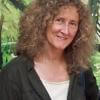









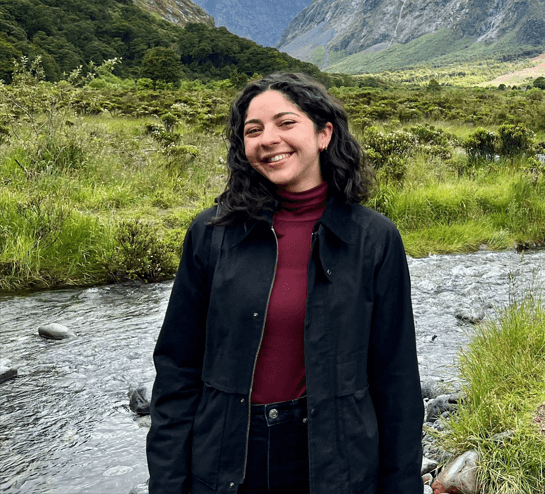



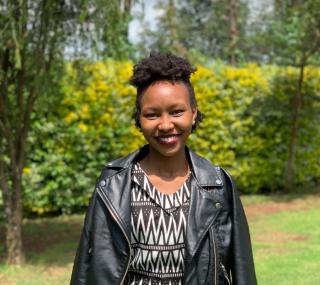
















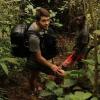
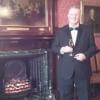



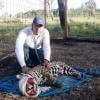
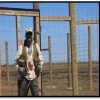

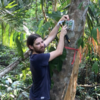


22 October 2020 8:14pm
Hi Sophia,
Just wondering what 'collaborate' means here - are you looking for a volunteer on the project or do you have budget to support the project?
Steph